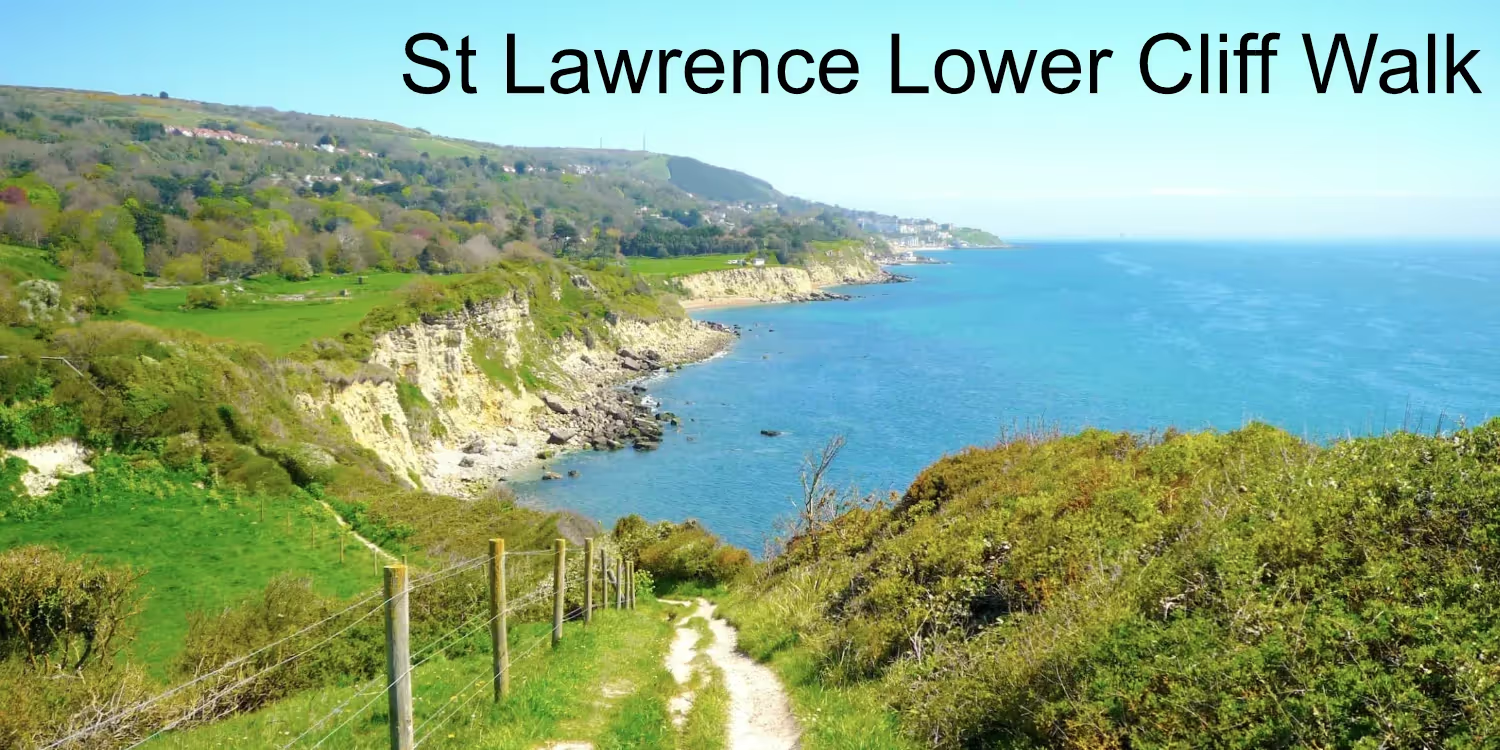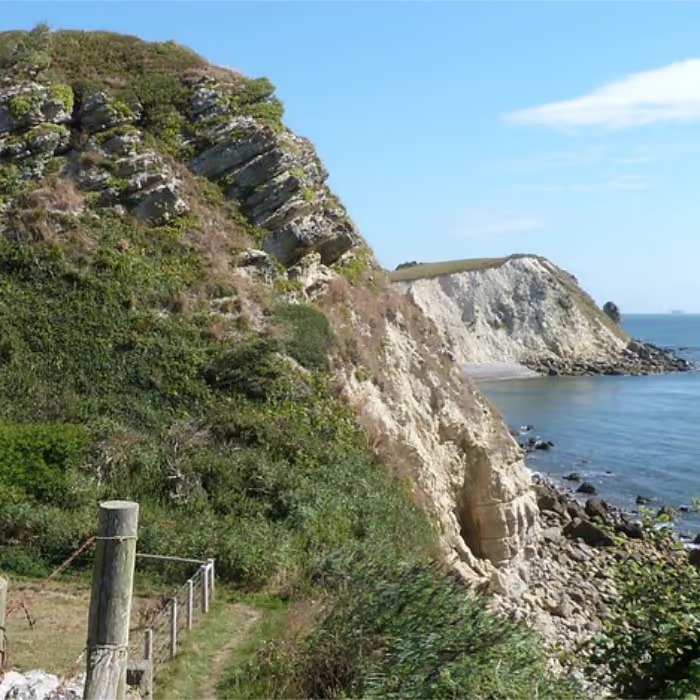THE "LOWER" CLIFF WALK
(with reference to the flora and fauna)
This walk is less than two miles long, and allowing for time enjoying the views, flora and fauna, takes about an hour.
From Undercliff Drive, there are two ways to access it. You can either walk down Old Park Road, past Binnel Studiosand onto Binnel Bay. Or you can turn right down Old Park Road and enter Hunts Road, a cul-de-sac, at the end of which is a track marked with a rustic sign which leads into Charleswood.
If you go down Old Park Road take the left hand lane. You will go past a distinctive planting of mature “Stone or Umbrella Pines” (Pinus pinea). The lane eventually leads to Binnel Studios where a group of Island artists have their private studios. Whether you go through the woods or down Old Park Road you will glimpse Old Park, a substantial residence, now a hotel, but once the home of William Spindler, a wealthy German chemist, who carried out many public works in and around the village.
If you decide to go through the woods, the path quickly descends towards the coast - be prepared for some muddy paths after rain! The woods are made up largely of Sycamore, but Yew, Common Lime, Turkey Oak and Ash can also be seen.
Perhaps the most notable species amongst the woodland ground flora are the very large stands of “Hart’s Tongue Ferns”, (Phyllitis scolopendrium), the only British fern to have an entire frond. These can be seen at all times of the year. Also to be seen are “Butchers Broom”(Ruscus aculeatus), a distinctive evergreen with large red fruits in winter. A rather unusual native shrub, the “Spurge Laurel” (Daphne laureola) is to be found on the side of the woodland path.
Eventually the woodland path joins up with the coastal path from Binnel Studios, and the first sea views. On the left is a very distinctive spinney of Sycamore.
Just before you descend the wooden steps to Binnel Bay, there is evidence of large badger set in the vegetation on your right.
Binnel Bay is the subject of a very laid back track by local Ventnor band The Bees, and features on there award winning album “Sunshine Hit Me”. As you walk down the steps, there are some examples of very large Tamarisk, (Tamarix gallica) which has naturalised on the cliffs here and tolerates the maritime conditions.
If the tide is low you will see evidence of a harbour wall constructed by William Spindler, known locally as “Spindler’s Folly” on account of its cost and eventual destruction. Again at low tide there are a variety of marine rockpools to explore.
As you look westwards toward the cliffs, evidence of recent landslips can be seen, with trees in all sorts of peculiar angles! As you look westwards, you will see St. Catherines Lighthouse. The third most powerful lighthouse in the British Isles, with its main light visible for up to 30 miles in clear weather.
Turn left and head up to the cliffs. In early summer the vegetation here is home to one of the rarest butterflies to be found in the British Isles, the Glanville Fritillary. The Glanville Fritillary is a highly restricted species in the UK being confined to the south coast of the island. The Glanville Fritillary (Melitaea cinxia) is a medium sized orange, black and white "checkerspot" butterfly inhabiting the soft undercliiff, where it feeds on the “Ribwort Plantain”, Plantago lanceolata. On warm sunny days they
can be seen in some abundance.
Lovely channel views can be seen from all parts of the walk now. Botanically there is a variety of plants to be enjoyed at all times of the year, but in April and May the stars are the Cowslips, (Primula veris), which are locally abundant in on the cliff path just beyond Binnel Bay. “Sea Thrift”, (Armeria maritima) grows here in some abundance, and fantastic unusual lichens can be seen clothing the rocks.
Herons can generally be seen here, and even foxes have been spotted on the beach at low tide!
As the walk progresses, look down onto the cliff faces. Two interesting species can be seen. One is the “Yellow Horned Poppy”, Glaucium flavum, a gorgeous species with bright yellow flowers and silvery leaves which only grows in maritime habitats. Also the “Rock Samphire”, Crithmum maritimum, a species with fleshy leaves. This plant is edible and formerly used in salads and pickles. It was collected on the island by “cliffsmen” who made a precarious living at certain times of the year harvesting it.
Most of this walk is flat and easy but there are one or two slopes to traverse.
Distant views of Ventnor and St. Boniface Down can be seen, and on your left you will walk past the remains of RAF St. Lawrence. The base of the aerial mast and receiver block (completely mounded up) and now with entrance sealed, are in the farmland as you walk past.
Notable flora in early summer include several species of orchids including the amazing “Bee Orchid”, Ophrys apifera.
The “Sugar Loaf”, a distinctive hill with tilted rock strata visible, now comes into view.
The walk concludes at the next cove Woody Bay. From here you can walk along the cliff path to Ventnor Botanic gardens and beyond or take the path back into the village.




